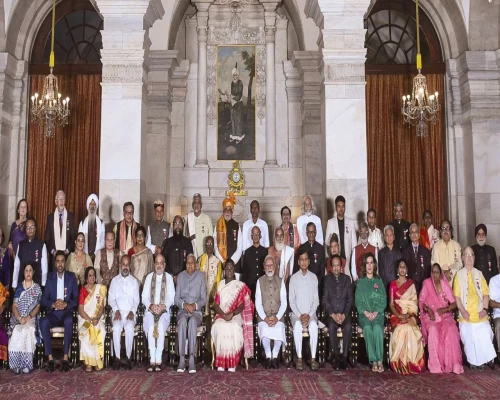_1000_x_500.webp)
New Delhi: In an era defined by digital innovation, internet connectivity has become crucial for economic growth, education, healthcare, and governance. However, the digital divide posed a significant challenge in rural India. To address this, the government launched BharatNet in October 2011, an ambitious project aimed at providing affordable high-speed internet to every Gram Panchayat in the country. Led by the Ministry of Communications, this initiative is pivotal in empowering rural communities and bridging the gap between urban and rural areas. BharatNet serves as the foundation for India’s journey towards becoming a fully digital nation.
In August 2023, the government approved the Amended BharatNet Program (ABP), introducing optical fibre connectivity to 2.64 lakh Gram Panchayats in a ring topology, with provisions to connect an additional 3.8 lakh non-Gram Panchayat villages on demand. With an allocated budget of ₹1,39,579 crore, this enhanced design includes measures such as optical fibre connectivity from blocks to Gram Panchayats, an IP-MPLS network with routers, centralised network monitoring, and power backup for uninterrupted service. The initiative ensures robust network uptime, leveraging a remote fibre monitoring system and focusing on long-term operation and maintenance.
The Digital Bharat Nidhi, established to replace the Universal Service Obligation Fund, is instrumental in improving telecommunication services across India. This fund supports the delivery of affordable, high-quality digital services in rural and remote areas, promoting equitable access to information, economic growth, and reducing barriers to digital inclusion.
BharatNet operates as the world’s largest rural broadband connectivity programme, executed by Bharat Broadband Network Limited. Implemented in three phases, the initiative has laid the groundwork for future advancements. Phase I connected one lakh Gram Panchayats through optical fibre by 2017, establishing the foundational network. Phase II expanded coverage to an additional 1.5 lakh Gram Panchayats using a combination of technologies, including radio and satellite. Phase III, currently ongoing, focuses on integrating 5G technologies, increasing bandwidth, and enhancing last-mile connectivity to ensure a resilient network. The network infrastructure incorporates optical fibre cables, satellite links, and wireless technologies. BharatNet adopts a Public-Private Partnership model to ensure efficient execution and long-term maintenance.
BharatNet has transformed rural India, fostering digital inclusion and economic opportunities. It has connected remote villages to high-speed internet, enabling access to e-governance services, online education, and telemedicine. Rural communities now benefit from digital commerce, financial services, and entrepreneurial opportunities, contributing to increased incomes. The initiative has facilitated digital classrooms and telehealth services, bridging resource gaps and enhancing access to quality education and healthcare. Gram Panchayats have leveraged BharatNet for e-governance projects, improving transparency and citizen engagement in public services.
As of October 2024, India has made remarkable progress in internet connectivity, with nearly 6.16 lakh villages having 4G mobile connectivity. The number of 4G base transceiver stations has reached nearly 25 lakh, and India leads globally in the rapid deployment of 5G services, with over 4.6 lakh 5G stations operational. The cost of data has significantly decreased, and broadband speeds have surged, reflecting the transformative impact of BharatNet and complementary initiatives.
BharatNet is a cornerstone of India's mission to create a digitally empowered society. By addressing the digital divide and maintaining its momentum, the initiative is paving the way for a more inclusive and connected future. With sustained efforts and robust implementation, BharatNet continues to empower millions in rural India, enabling them to access opportunities beyond their immediate surroundings and contribute to the nation’s digital transformation.
Source: PIB













